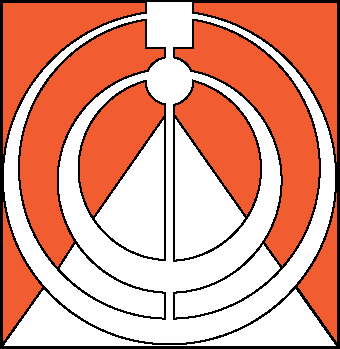A Model for Bundling and Sequencing the 59 Middle School Performance Expectations of NGSS
Friday, December 23, 2016
There are 26 bones in the human foot, all of them critical, but unless they are connected properly, you aren't going to walk very far.
The same is true of the Next Generation Science Standards' performance expectations, only there are nearly five dozen of them for grades 6-8 alone. That's why the educational community is developing guidance on the curricular tendons, muscles and ligaments needed to knit them together.
“Of the 59 performance expectations, we have to determine what comes first, second and third, and what students will need to know before they proceed,†said Mi-STAR Operations Director Brenda Bergman. Enter the Unit Challenge Progression Model, which bundles performance expectations with intriguing Unit Challenges to form the framework of the Mi-STAR curriculum. “Students will engage with the same concepts and practices multiple times over three years, but we need to be sure that those concepts and practices are introduced, explored in-depth, and reinforced at appropriate stages along the way.â€
These performance expectations are nothing like the “This-Will-Be-On-The-Test†concepts of yesteryear. Here's an example for the sixth grade: “Develop and use a model to describe how unequal heating and rotation of the earth can cause patte
rns of atmospheric and oceanic circulation that determine regional climates.†Seriously.
Incorporating concepts like that into a middle school science curriculum might seem daunting, says Bergman, but Mi-STAR and other curriculum developers across the U.S. have been doing just that. For Mi-STAR, however, simply building a curriculum is not enough.
“We want to make these units relevant and engaging,†she said. To do that, each of the 22 units in the Mi-STAR middle-school curriculum hinges on a real-world Unit Challenge for students to solve. Two to four performance expectations are bundled into each unit, and as the students master those expectations, they apply that knowledge to the Challenge. By the end of the unit, they have the knowledge and skills to address the Challenge.
“That's what makes Mi-STAR exciting,†Bergman said.
In 2015, a group of Mi-STAR curriculum developers, educators, scientists, and engineers began the hard work of bundling performance expectations in a way that addresses real-world issues that would become Unit Challenges, while making sure that concepts and practices within the units built upon each other logically.
Once they had completed the first version of the Unit Challenge Progression Model, they began working with Michigan science teachers and other content experts to flesh out the details of each unit, right down to daily lesson plans. After testing some units in Michigan schools, they revised the progression model and forged ahead with designing more curriculum.
“Without the progression model, we couldn't accomplish much,†said Bergman. “When teachers, curriculum developers, and content experts sit down and work together, they need to know what to address, and the progression model gives them the bare essentials.â€
The eighth-grade unit on natural hazards is a case in point. The Mi-STAR team linked it to an NGSS performance expectation requiring students to “integrate qualitative scientific and technical information to support the claim that digitized signals are a more reliable way to encode and transmit information than analog signals.â€
“This performance expectation seems unusual to some people,†Bergman notes. Eighth grade might be considered a bit early to address the physics concept of waves and their applications in technology. But it's turned out to be a good fit in a unit about phenomena like earthquakes and hurricanes. The teachers and curriculum developers have been able to write lesson plans that knit this performance expectation to a Unit Challenge in which student teams tackle a hazard assessment for one state. They research several natural hazards that affect the state, figure out which pose the greatest threat, and make the case for the technologies their state should employ to mitigate them. .
“The students are modeling tectonic plates and the movements of air masses to find out why hazards happen where they do. They come to realize that scientists need to use technology to warn people about what air masses or volcanoes or faults are doing,†said Stephanie Tubman, Geologist and Mi-STAR Curriculum Development Specialist. “A lot of times scientists get their data from instruments that send digital signals as wave pulses. As part of the unit, students learn how digital technology has helped scientists give the public better warnings about natural hazards.â€
With Mi-STAR's Unit Challenge Progression Model on hand, teams of curriculum developers, classroom science teachers, and content experts continue to write lessons to flesh out the units. Six of the 22 units are being tested in schools this academic year, and six others will be ready to roll out in Michigan classrooms next year.
It will be a couple years before the entire Mi-STAR curriculum is up and running for grades 6-8, but according to many teachers who have helped to develop and test the curriculum, it will be worth the wait.
An article on the Unit Challenge Progression Model, “A Progression and Bundling Model for Developing Integrated, Socially-Relevant Science and Engineering Curricula Aligned with the Next Generation Science Standards,†coauthored by Bergman, Tubman, Emily Gochis and Jacqueline Huntoon, was published in the Fall 2016 edition of the Journal of the Michigan Science Teachers Association.
Visit Mi-STAR’s website for more information on the Grades 6-8 Progression Model.
GET Mi-STAR NEWS BY E-MAIL!
Copyright © 2025 Mi-STAR
Mi-STAR was founded in 2015 through generous support provided by the Herbert H. and Grace A. Dow Foundation. Mi-STAR has also received substantial support from the National Science Foundation, the MiSTEM Advisory Council through the Michigan Department of Education, and Michigan Technological University.


















